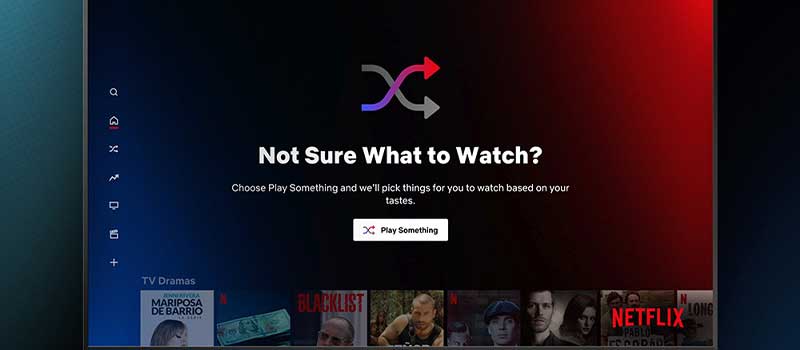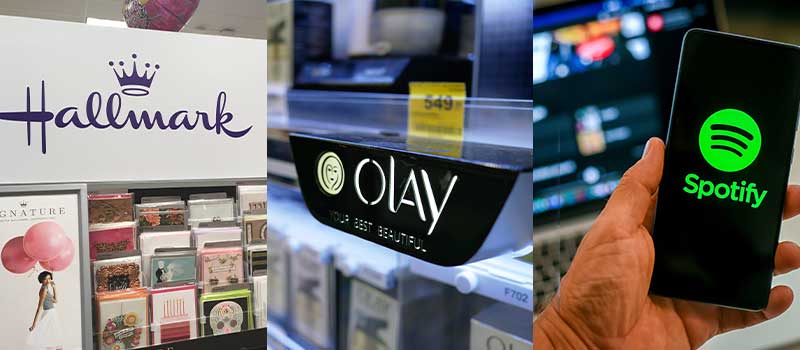Have you ever wished you could better understand your audience?
Brand segmentation is one way to get to the heart of your audience and understand every buyer as an individual.
The term might sound like a lot of work, but it’s actually incredibly straightforward.
Segmenting your audience can help you understand what motivates your buyers, so you can target them better in the future.
Let’s dive deeper into what behavioral segmentation is and figure out how you can use it to improve brand loyalty.
What Is Behavioral Segmentation?

Basically, marketing segmentation separates your audience and customers into distinct groups to better understand their purchasing behavior.
Some subsections of your audience might behave differently depending on their demographic, such as age, location, and whether they have bought from you before.
E-commerce websites can easily segment their customers based on their behavior on the site, which you can obtain from most metrics-tracking tools, including Google Analytics.
Why Is Behavioral Segmentation So Important?

There are many benefits of behavioral segmentation.
Firstly, you get better accuracy in your marketing campaigns.
You can choose exactly which subsections to target and direct your branding messages at them, boosting the chances of making a sale.
For example, you can target new buyers with freebies and introductory offers, but these tactics are less likely to work on your most loyal customers.
Customers these days also expect more authenticity. In the age of social media and influencer marketing, consumers crave a more personal, friendly approach.
You’re unlikely to get a response from a generalized marketing email, but one with a personal touch might just do the trick. If you understand the buyer’s motivations and where they’re at in the journey, you can more effectively make a sale.
Behavioral segmentation is also budget-friendly.
You can know which areas of your audience are the most engaged, which means you can concentrate most of your budget there. It’s a cost-effective form of marketing to increase conversion rates.
Finally, segmenting can increase brand loyalty and reduce churn. When customers feel special and valued, they’re more likely to stick around.
PRO Brand Strategy BluePrint
Build Brands Like A Pro Brand Strategist

What Are the Types of Behavioral Segmentation?

There is more than one type of behavioral segmentation because there is more than one way for a customer to interact with a brand.
Let’s cover the different types of behavioral segmentation to see how they work.
Explore Brand Strategy
Programs & Tools
#1. Purchasing Behavior

The first category is purchasing behavior, which addresses how customers behave during the buying journey.
There are four categories within purchasing behavior:
Complex: Some purchases are very large and require a lot of thought. For example, buying a new car or a home. These purchases are infrequent.
Habitual buying: At the other end of the spectrum, there are purchasing decisions that happen every week. For example, grocery shopping. Often, people buy whatever is cheapest, without any brand loyalty.
Variety-seeking: Sometimes consumers get bored with something they buy often, and they opt for something different. Take buying a different kind of coffee, for example.
Dissonance-reducing: If a customer was highly involved in the purchasing process and had to choose between two brands, they might seek reassurance afterward that they made the right choice.
Understanding customer behavior in the lead-up to the purchase can help you target specific leads.
#2. Usage Behavior

Usage behavior looks at how often buyers use your product or service.
It also involves behavior patterns like what they do with your product and how they interact with it. If it has more than one feature, which features do they use the most?
You can further segment usage behavior into light, medium, and heavy users. Light users do not engage with your product frequently, whereas heavy users interact with it a lot.
It’s best to focus marketing on heavy users, where you have a better chance of sale success.
#3. Benefit Sought

You also need to consider what benefit customers want out of your product.
In other words, what pain point does your product solve? Sometimes, your product can solve more than one pain point for potential customers, and each buyer might come to your business for a different one.
If you understand these different pain points, you can target customers according to what they want to see.
#4. Timing or Occasion Based

Perhaps your customers buy your product for specific occasions.
This is more obvious if you sell holiday-themed items, which are universal occasions.
However, for many businesses, a large section of their market might be buying products for personal occasions.
For example, recurring occasions like birthdays, anniversaries, and vacations, or rare ones like weddings and graduations.
Rare occasions can be hard to predict, but this doesn’t mean you should ignore them as a segment of your customer base.
Instead, try to find out why people are purchasing your products.
#5. Customer Journey Stage

It’s also important to consider where the customer is in the sales funnel.
There are several touchpoints along the way that you should look at targeting:
Awareness: Customers here don’t know that your brand exists yet. You need to find a way to get yourself in front of your target audience. Advertising on social media, TV, and in magazines can help.
Consideration: Here, a customer is contemplating buying from your brand. They may be considering some of your competitors as well. Target them with influencer marketing, email campaigns, and testimonials.
Purchase: Now, the customer has decided to purchase from you. It’s essential to make sure your website or store is up to scratch.
Customer retention: Even after buying from you, you can’t lose contact with the customer. Retain them with email marketing, loyalty programs, and online communities.
Advocacy: You can also encourage your buyers to spread the word about your business. In part, this circles back to target newer customers in the Consideration phase.
Notice how each of these steps requires a different marketing tactic. There may be some overlap, but each one should involve unique marketing materials.
#6. Customer Satisfaction

One thing that is sure to increase brand loyalty is how happy your customers are.
However, one mistake many brand builders make is that they forget a customer’s needs can change.
Real-time behavioral data can tell you how satisfied customers are at different points in the journey, helping you target them in different ways to boost their happiness.
Traditional surveys don’t cut it anymore, so analytics tools are essential.
#7. Customer Loyalty

Some customers will buy from you only once, but others develop loyalty with your brand.
If a customer is loyal, they are likely to buy from you again and again.
On average, attracting new customers costs 5x more than retaining loyal ones. Knowing which customers are loyal can therefore save you money.
#8. Interests

It’s important to understand what your customers are interested in.
This doesn’t just mean addressing their pain points. Customers are complex human beings, and they are likely to be interested in an array of different things.
Take streaming websites, for example. They keep their audiences engaged by continually recommending new suggestions based on the user’s previous behavior.
#9. Engagment

Engagement is about understanding who your most engaged buyers are.
Engagement can vary between industries and businesses, but you should be able to segment different buyers by their engagement levels.
More engaged customers are likely to buy from you again, so keep engaging them.
#10. Spending Habits

You need to know how customers spend their money, especially with you.
For example,
Do they prefer to buy online or in-store?
What payment method do they use – credit card or debit? Do they like to shop with coupons?
All of these questions can help you understand what buyers want to see when they enter your store or click on your site.
And when you know, you can create a personalized customer experience that works for them.
#11. User Status

User status refers to the way people use your business.
So, non-users are people who do not use your business at all. Leads are those who are aware of your business and might interact with it, but they haven’t made a purchase. Regulars are customers loyal to your brand, and so on.
There are endless ways to segment customers by their status, but it’s worth understanding how different consumers interact with you.
#12. Brand Interactions

Finally, you can understand how customers engage across all of your channels.
Most brand builders know the value of marketing across different channels. Partly, it’s because different customers will engage with you on different platforms.
Some buyers will spend all their time on your website and no time on your socials. For others, it’s the opposite.
Knowing which users are interacting with you where can help you develop branding campaigns that target them effectively.
Behavioural Segmentation Examples for eCommerce

A segmentation marketing strategy will look different for every brand. Some brands have absolutely mastered the process, such as Netflix.
The streaming service uses an AI to determine what shows, genres, and actors its viewers enjoy, then recommends more titles based on customer data.
It even changes the title cards to show actors and scenes the individual user is more likely to click on.
Here are some examples of behavioral segmentation more specific to e-commerce sites.
#1. Hallmark – Occasion-Based Marketing

Hallmark excels at occasion-based segmentation.
It gains email subscribers whenever people make an online purchase, and stores data such as the time purchased and the category of card.
That way, Hallmark can send push notifications around the same time the following year for someone who purchased a birthday card, encouraging them to buy again.
#2. Olay – Providing Personalized Benefits

Skincare brand Olay does an amazing job at making its customers feel special.
By answering some questions about their skin and skincare routine online, customers can get expert-recommended products from Olay.
It feels unique, special, and valuable.
For Olay, this means they can upsell products to customers.
It also allows them to collect data about their customers’ habits and needs.
#3. Spotify – Interest-Based Marketing

Spotify has some of the best marketing tactics in the world. It caters to users’ interests by recommending songs and artists based on their previous listening habits.
With these personalized experiences, Spotify encourages users to pay for a premium membership that lets them discover more music.
What’s more, it also provides a Spotify Wrapped at the end of the year, which gives every user a personalized breakdown of their listening history. It makes every user feel unique and special.
Over To You
Behavioral segmentation will look different for every brand. A lot hinges on your industry, target audience, and business goals.
Behavioral segmentation is also far from the only thing you need to consider when building a brand. Make sure you consider the other aspects of your branding strategy to make sure everything ties together.
On-Demand Digital Program
Brand Master Secrets
Make the transition from hired-gun to highly valued brand strategist in less than 30 days. The systems, frameworks and tools inside this comprehensive program are all you need to level up.







